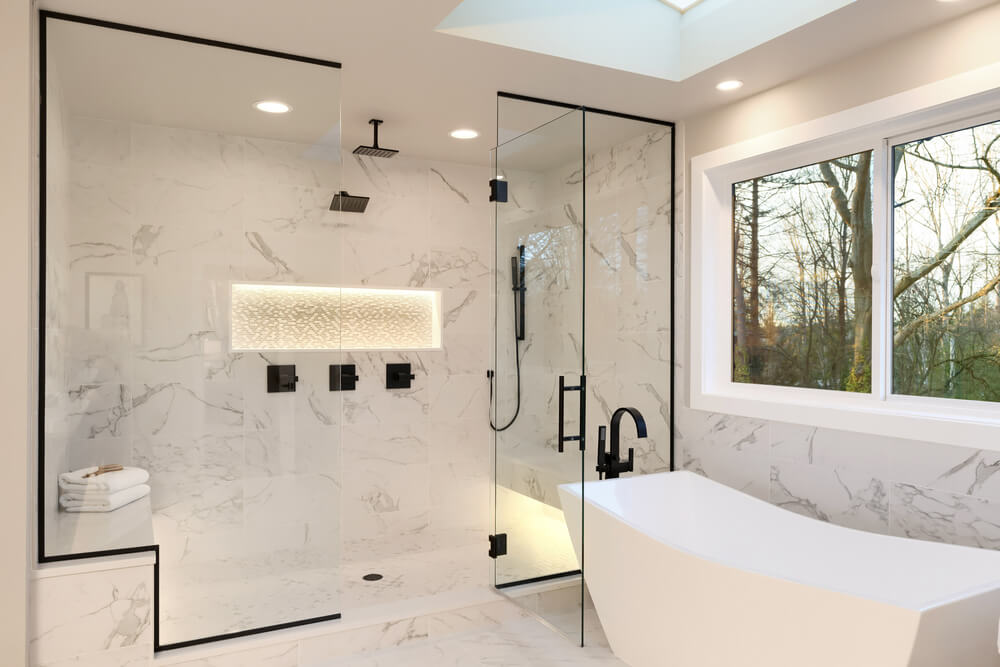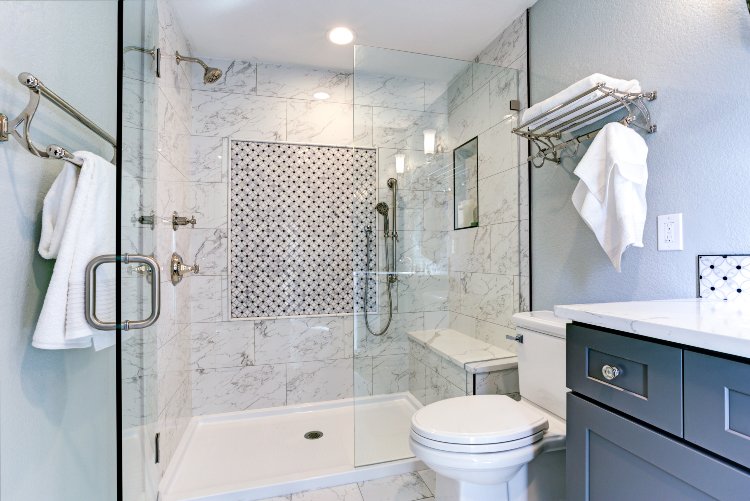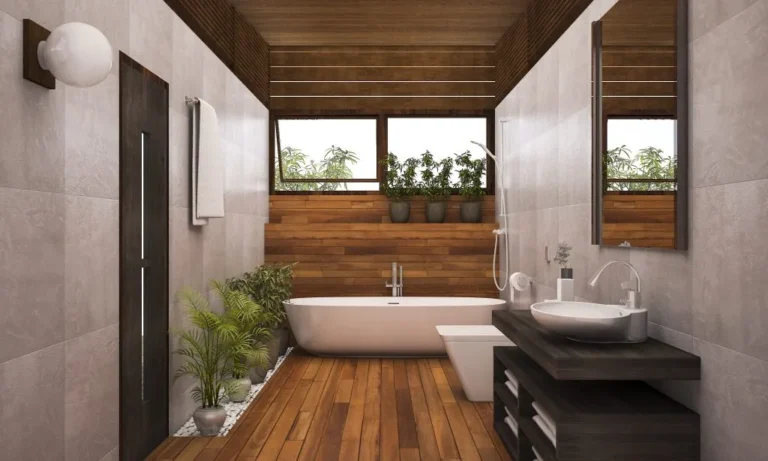Walk-In Shower vs. Bathtub: Which Is Best for You
When it comes to remodeling a bathroom, one of the biggest choices people face is whether to go with a walk-in shower or a bathtub. Both have their benefits, and both come with trade-offs. What works best depends on your space, lifestyle, and long-term needs. This blog takes a closer look at each option, using clear examples and simple comparisons, so you can make a choice that feels right for you.
Why the Decision Matters
Bathrooms are more than just practical spaces. They can be places where you start your day with energy or unwind at night. The choice between a shower and a tub may seem small, but it can affect how you use the room, how much cleaning you do, and even the value of your home.

Walk-In Showers: The Basics
Walk-in showers are designed for easy access. They usually have glass doors or panels, tiled walls, and a drain built into the floor. Some are small and simple, while others take up an entire wall.
Pros of Walk-In Showers
- Ease of access: No climbing over a tub wall.
- Modern look: Clean lines and open layouts.
- Space saving: Works well in smaller bathrooms.
- Quick use: Great for busy mornings.
- Low water use: Often uses less water than filling a tub.
Cons of Walk-In Showers
- No soaking option: You can’t stretch out for a bath.
- Cold feel: Less cozy than a tub.
- Cleaning glass: Doors and panels need regular care.
- Resale factor: Some buyers still want at least one tub in a house.
Bathtubs: The Basics
A bathtub is the classic choice for bathing. It can be stand-alone or built into the wall with a shower head above it. Families with kids often find tubs practical.
Pros of Bathtubs
- Relaxation: Great for soaking and stress relief.
- Kids and pets: Easier for bathing little ones or washing a dog.
- Warmth: Feels cozy and inviting.
- Resale value: Many buyers expect at least one tub.
Cons of Bathtubs
- Space use: Takes up more room than most showers.
- Water use: A full tub can use more water than a shower.
- Access issues: Climbing in and out can be hard for older adults.
- Time: Filling a tub takes longer than stepping into a shower.
Comparing Costs
Costs vary by style, size, and materials. A simple shower might cost less than a freestanding tub, but custom tile work can raise the price. Here’s a rough comparison:
| Feature | Walk-In Shower | Bathtub |
|---|---|---|
| Average cost range | $1,000 – $7,000 | $600 – $6,000 |
| Water use (per use) | 10-25 gallons | 30-50 gallons |
| Space needed | Small to medium | Medium to large |
| Install time | 1-3 days | 1-2 days |
Safety Considerations
Safety is a big factor for many households. Walk-in showers usually come out ahead for people with mobility challenges, since they remove the need to climb. Grab bars, benches, and slip-resistant flooring can make them even safer. Bathtubs can be fitted with safety rails or walk-in designs, but these often add cost.

Cleaning and Upkeep
Cleaning needs vary between the two. Showers with glass doors often show water spots and soap scum, which means frequent wiping. Tubs don’t have that issue, but the wide surface area can collect dirt. Tile grout in showers may also need more regular care to avoid mildew.
Lifestyle Fit
The right choice often comes down to daily habits. If you live a fast-paced life and rarely take baths, a shower may be best. If you enjoy long soaks or have small children, a tub might be worth the space. Some homeowners decide to have both, if space allows, to get the best of both worlds.
Design Options
Walk-in showers can be sleek, with glass walls that make a bathroom feel larger. Tubs can be classic, modern, or even clawfoot for a touch of charm. Both come in many styles and can fit into different design themes.
Future Planning
It’s smart to think about future needs. A walk-in shower may suit you better as you age. Families, on the other hand, may need at least one bathtub for children. Balancing your current use with future plans helps avoid costly remodels later.
Environmental Impact
Water use is another angle. Short showers use less water than filling a tub, which makes them better for conserving water. Long showers, though, can use just as much or more than a bath. Installing a low-flow showerhead helps cut down use.
Making the Choice
There isn’t one right answer. Both walk-in showers and tubs serve different needs. Think about your routine, your family, your space, and your long-term plans. If you plan to sell your home, you may want to keep a tub somewhere in the house, even if you prefer showers.
Common Questions
Do walk-in showers add value to a home? Yes, but losing the only bathtub might lower appeal for some buyers.
Can you have both in a small bathroom? Not usually. In most small spaces, you’ll have to choose one.
Which is better for older adults? Walk-in showers are usually safer and easier to enter.
Which is better for kids? Bathtubs make more sense for families with small children.
Final Thoughts
In the end, the choice between a walk-in shower and a bathtub depends on more than design. It’s about how you live, what you enjoy, and what fits your future. A shower can save space, save time, and feel modern. A tub can invite calm, bring comfort, and serve family needs. Weigh the pros and cons, look at your bathroom, and decide what fits your life best.






